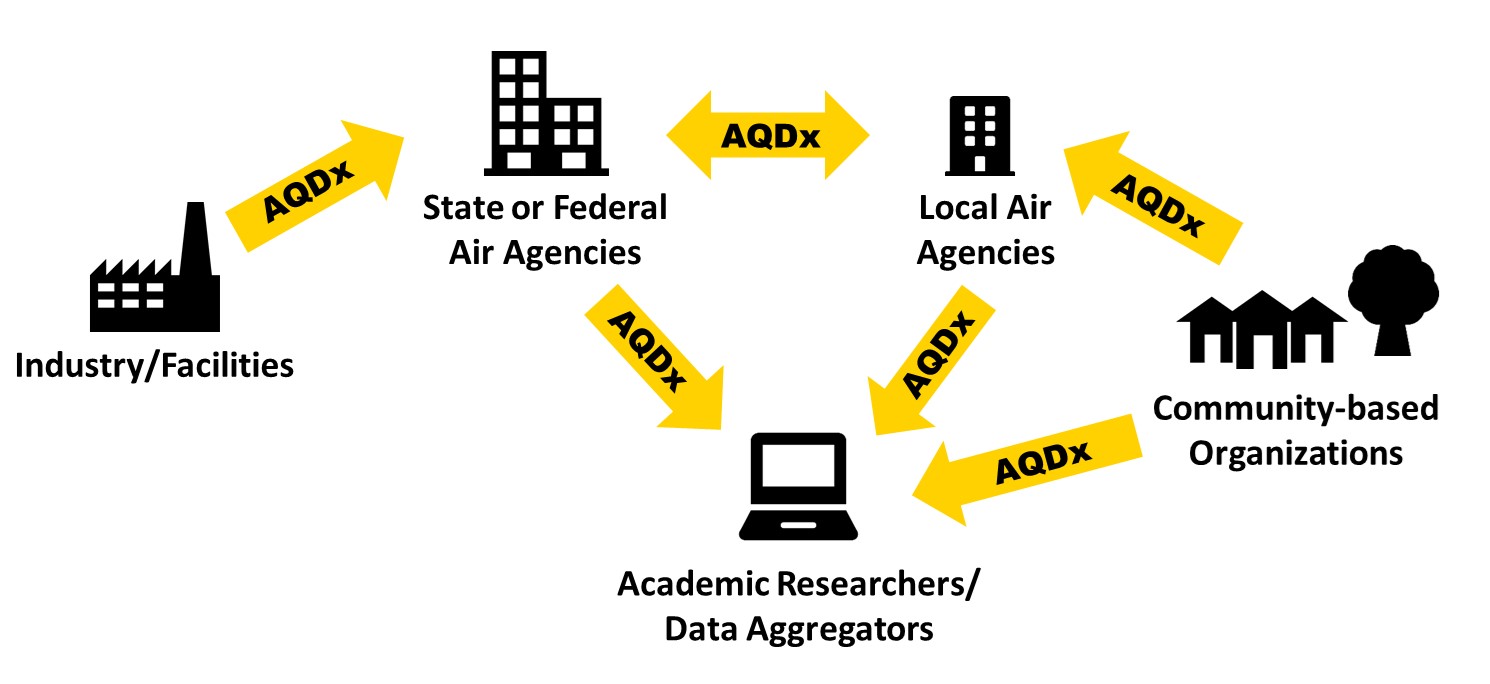Air Quality Data Exchange
On this page: Overview | The details | Current work and future plans | Get involved | Contact us
Overview
The Air Quality Data Exchange (AQDx) format is a way to organize and share air quality data. It is an enhanced version of the Air Quality Comma Separated Values format, which the U.S. Environmental Protection Agency uses for its AirNow program. The primary objective of the AQDx format is to help different groups share air quality data and information about data quality. The information enables recipients to make appropriate decisions about the use of the data. The standard format makes it possible to build shareable tools to ingest, process, analyze, and visualize the data more efficiently. The format also enables better use of air quality data to inform actions and policy decisions.
The AQDx format is the result of a collaborative project among the CDPHE Air Pollution Control Division, EPA, and TDEnviro. The partners designed the AQDx format to handle different kinds of air quality monitoring data. The AQDx format is intended to be easy to understand and accessible for a wide range of users. The AQDx format leverages codes from the EPA’s existing Air Quality System to support compatibility across different data sources. The format is designed to be flexible enough for use with various types of instrumentation. For example, it is suitable for data from low-cost air quality sensors, next-generation research-grade tools, and regulatory monitors.
The anticipated audience and users of the format include:
- Facilities required to send data from fenceline monitors to an air agency.
- Local air agencies that share data with their central state air agency.
- Community groups that share data from a sensor network with local air agencies.
- Academic researchers who aggregate data collected by others for analysis.

Figure 1: Data exchange between different entities such as facilities, air agencies, community groups, and academic researchers.
The details
- There are two versions of AQDx:
- Comma-Separated Values (CSV) version, which is best for finite datasets or historical data.
JavaScript Object Notation (JSON), which is best for real-time or streaming data.
Each data record contains the following color-coded fields:
- data_steward_name, device_id, device_manufacturer_name.
- datetime, lat, lon, duration, parameter_code, method_code, value, unit_code.
- autoqc_check, corr_code, review_level_code, qc_code, qualifier_codes, data_license_code, elev.
Information in green identifies the source of the data. Information in blue provides the key data records. Information in purple provides information on data quality as well as supplemental information. Complete information and guidance is available through several documents:
- Guidance documentation.
- Provides guidance on using this format for datasets.
- AQDx metadata form.
- Fillable worksheet containing comprehensive metadata to accompany a dataset.
- Metadata guidance documentation.
- Provides guidance on completing the metadata form.
Current work and future plans
In July 2024, the division began collaborating on several data pilots to test the format with real-world data and identify opportunities for optimization. These data pilots will help determine the additional resources needed to simplify the process of using AQDx, such as open-source tools for data transformation and validation.
The division plans to propose the integration of AQDx into existing and new regulations. The change would bring data collected and submitted to the division by third parties into a single common format and allow a more efficient process to analyze the data.
The division created a working group to assess feedback and make modifications to the standard. The group includes staff from the EPA, Bay Area Air Quality Management District, and South Coast Air Quality Management District. The group meets periodically to assess feedback and make modifications to the standard.
Get involved
The division organized a stakeholder group for those interested in receiving updates on the standard. To join the stakeholder group or receive copies of presentations and past webinar recordings, email the division at cdphe.commentsapcd@state.co.us.
Contact us
If you have questions or comments, email cdphe.commentsapcd@state.co.us with the subject line, “ Air Quality Data Exchange.”